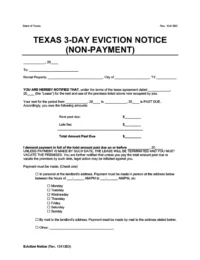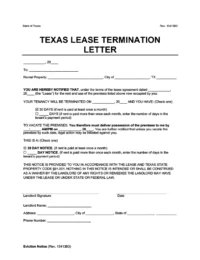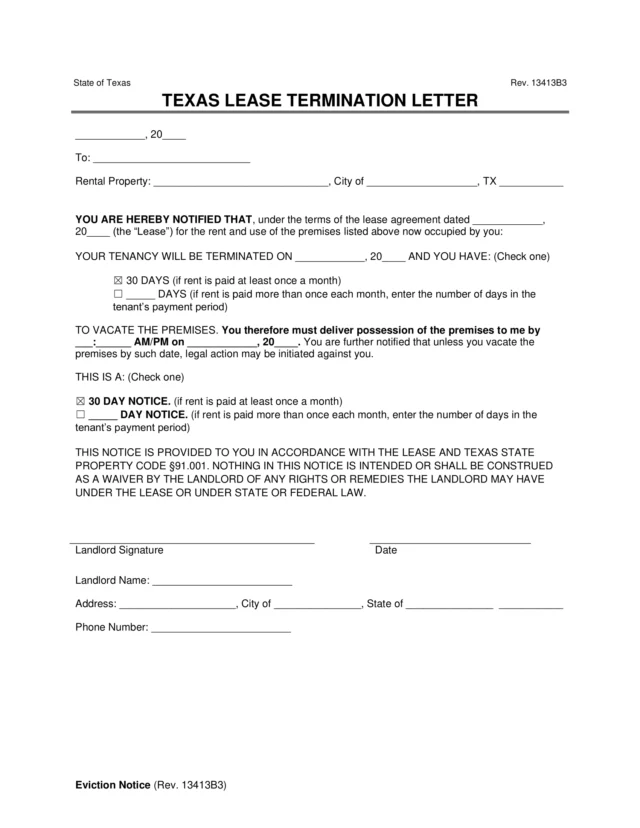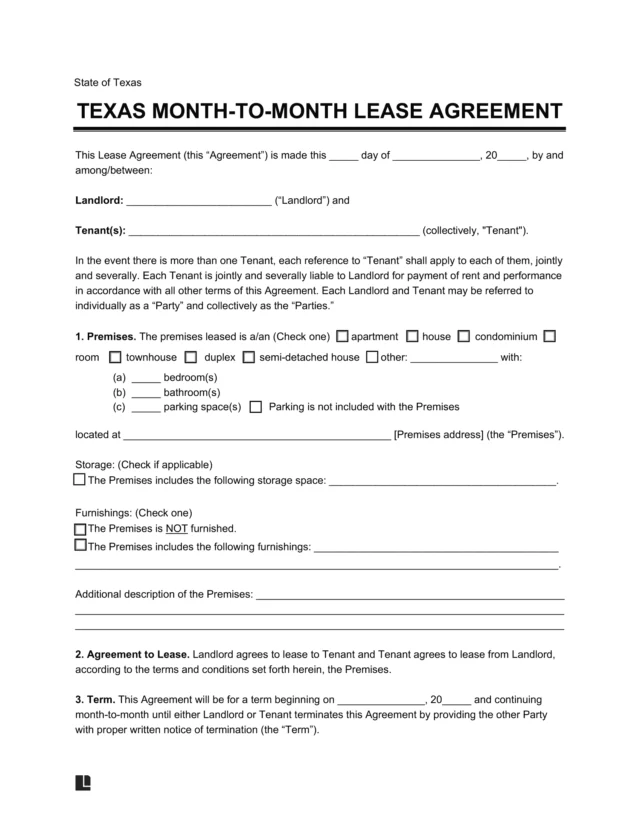Understanding Eviction Notices in Texas
In Texas, landlords must serve tenants with appropriate written notice before filing for eviction. The reason, such as cause or no-cause termination, determines the notice required.
Create a Texas eviction notice with our document editor in minutes and download it as a PDF or Word file when you’re ready.
Types of Eviction Notices in Texas
Texas requires landlords to serve an appropriate notice depending on the grounds for eviction, such as failure to pay rent or staying past the lease term.
3-Day Notice to Pay Rent or Quit
This notice demands that a tenant vacate the premises if they don’t pay their overdue rent within three days per TX Property Code § 24.005. If a tenant doesn’t pay the remaining rent within the provided timeframe, the landlord can initiate the official eviction process. Before sending this notice, you must give the tenant a two-day grace period per TX Property Code § 92.019(a)(3).
3-Day Notice to Pay Rent or Quit
Give a 3-day eviction notice for non-payment before proceeding with a lawsuit.
3-Day Notice to Quit for Non-Compliance
Issue this form to notify tenants of any lease violations they have committed. After three days of receiving this notice under TX Property Code § 24.005, a tenant must correct the offense or leave the premises.
3-Day Notice to Quit for Non-Compliance
Let a tenant know they've breached the lease and will face eviction unless they rectify the violation within three days.
30-Day Notice Lease Termination
Terminate an at-will month-to-month tenancy with a 30-day notice per TX Property Code § 91.001. Without this document, the rental agreement continues to renew itself automatically.
30-Day Notice Lease Termination
Let a tenant know you intend to terminate the month-to-month lease agreement at the end of thirty days.
How to Evict a Tenant in Texas
Before starting the eviction process in Texas, ensure you have read and understood the clauses under Texas Property Code, Title 4, Chapter 24 (Forcible Entry and Retainer) and Title 8, Chapter 92 (Residential Tenancies).
Step 1 – Deliver the Eviction Notice
Depending on the circumstances, the landlord must give the tenant the appropriate eviction notice.
Step 2 – Wait for the Tenant to Act
If the tenant cures the breach (if given the option) or moves out within the required timeframe, no further action is necessary. If the tenant refuses the eviction notice, they must reply to the court through a Defendant’s Original Answer form to argue in their defense.
Step 3 – Prepare the Initial Court Documents
Prepare to go to court in case the tenant responds with a defense. Complete documents like a Petition for Eviction and Statement of Inability (if you can’t cover court fees and costs).
Step 4 – File an Eviction Petition
If the tenant fails to cure the breach or moves out, the landlord must file a Petition for Eviction from Residential Permit with the Justice of the Peace Court to begin the official eviction process.
Step 5 – Serve the Petition
Someone other than the landlord must serve the petition to the tenant. This individual can be any competent adult who doesn’t have an affiliation with the case. To ensure reliable delivery, you can recruit a sheriff, law enforcement officer, or a professional process server for the task.
Step 6 – Attend the Court Hearing
The landlord and tenant must attend their respective court hearings. Unless the tenant is defending against the eviction, these preliminary hearings will typically be held separately.
Step 7 – Obtain a Decision
If the tenant doesn’t appeal within five days, the landlord will file a Request for Writ of Possession with the court.
If the court grants the Request for a Writ of Possession, the sheriff will help the landlord remove the tenant from the premises.
Related Texas Court Forms
- Petition for Eviction from Residential Premises: The landlord filed an official form requesting a court order to evict a tenant.
- Military Status Affidavit: A required supplementary form submitted by the landlord to inform the court if the tenant is currently serving in the military.
- Case Information Sheet: A required supplementary form submitted by the landlord that informs the court of the type of lawsuit being filed and its related parties.
- Defendant’s Original Answer: The official form whereby the tenant either confirms or denies the allegations made by the landlord in the Petition for Eviction form.
- Request for Writ of Possession: The official form submitted to the court by the landlord, requesting a court to use law enforcement to remove a tenant from the property. This form is used when a tenant continues to occupy the rental property after they have been officially evicted.








